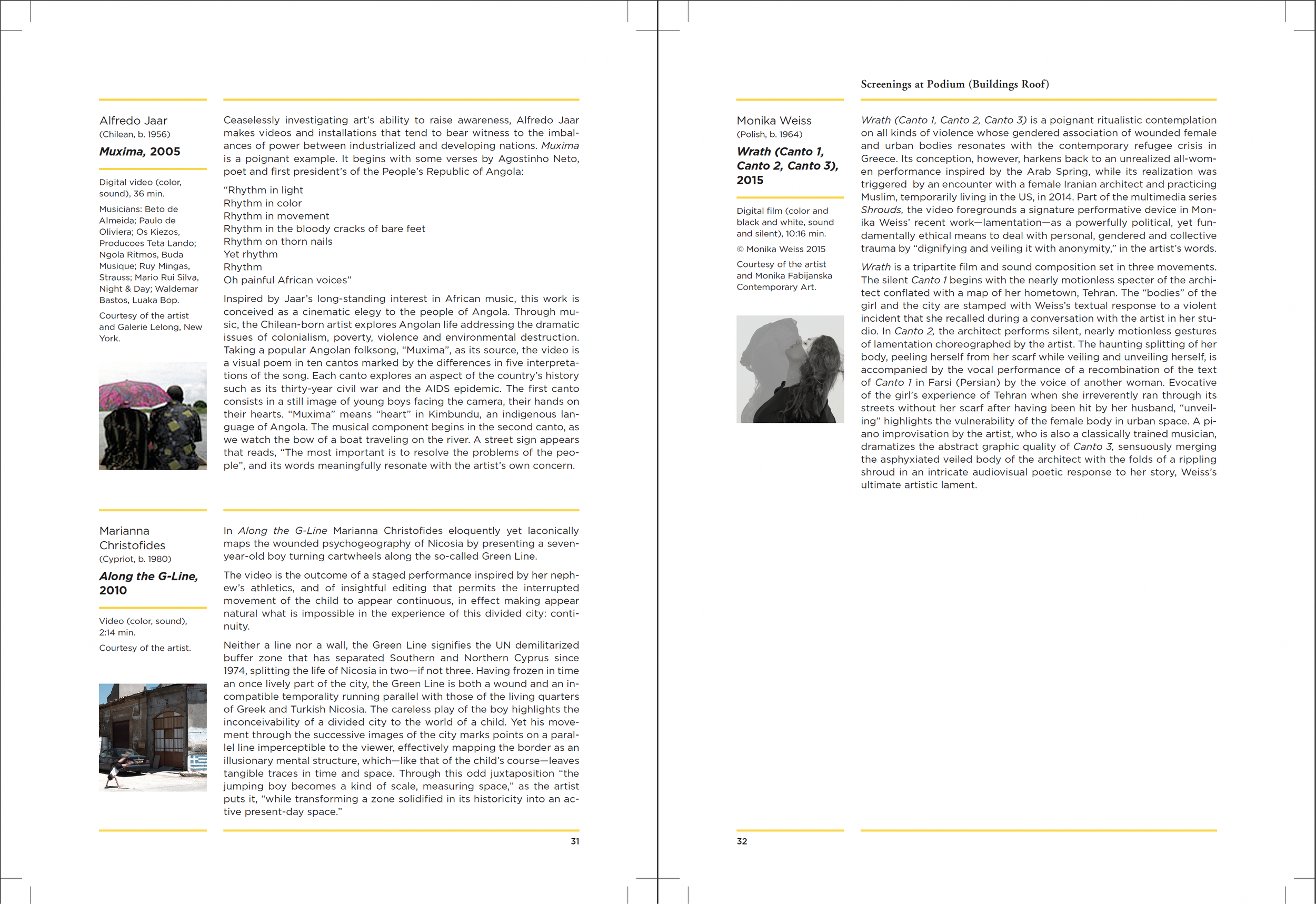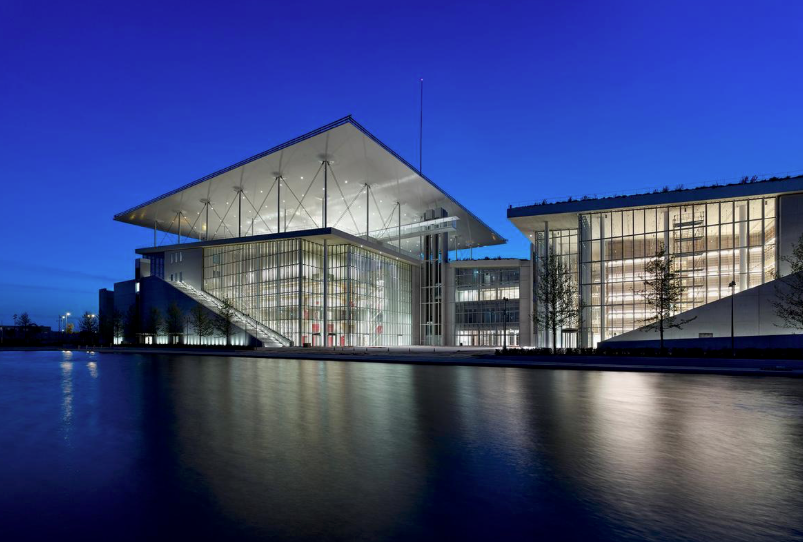wrath
above: excerpt from Wrath, 2015 (to hear the sound press the sound icon located in the lower right corner of the moving image)
WRATH (CANTO 1, CANTO 2, CANTO 3)
2015
digital 4K film projection, black and white, and color, sound & silent
duration: 10 minutes 16 seconds, limited edition, 3 + 2 AP
limited edition c-prints (film stills), dimensions variable, edition of 3 + 2 AP
below: selected limited edition film stills
Sound
Credits
image, movement, and sound directed, filmed, choreographed, composed and edited by Monika Weiss
movement performer: Parisa Hashemean
voice performer: Shirin Rastin
piano: Monika Weiss
text: Monika Weiss
text translated into Farsi by Shirin Rastin
Artist Statement
In Wrath the image is of a young woman architect from Iran, whom I filmed in my studio in New York. Sound and text in this work are my musical and textual response inspired by our conversation. I invited her to perform silent, nearly motionless gestures of lamentation by gradually removing her black head scarf, revealing her gaze, in silent meditation. This act evoked a memory of another time, in Tehran, when she abandoned her scarf and rushed through the city bareheaded, free, if only for that moment in time. My short poetic film became a record of this encounter but also a further musical, visual and textual exploration of the fragile and conflicting relationships between women’s bodies and cities, acts of veiling and exposure, and structures of power and history. As an artist I try to share moments of memory and history with my audience. History in my work is shown from the collective viewpoint of those who are or were marginalized, oppressed, forgotten, erased, disappeared or destroyed. I work with traces, remnants, after-histories, post-memories, archives, fragments. Not being a proper witness nor a proper survivor, I invite others to inhabit my films, sound compositions and performances to join me in the space of lamentation, understood as a political gesture. Lament is possibly the oldest known form of music and poetry. In my view, moments of historical and personal trauma are best represented by veiling them into dignified, protected, and anonymous stories. In Wrath my protagonist remains nameless yet is also powerfully present. My work relies on this immediacy of encounter but also on poetry and beauty as a form of language containing a possibility towards political, social and ethical transformation.
-Monika Weiss
Essay Excerpt
Wrath (Canto 1, Canto 2, Canto 3) is a poignant ritualistic contemplation on all kinds of violence whose gendered association of wounded female and urban bodies resonates with the contemporary refugee crisis in Greece. Its conception, however, harkens back to an unrealized all-women performance inspired by the Arab Spring, while its realization was triggered by an encounter with a female Iranian architect and practicing Muslim, temporarily living in the US, in 2014. The work foregrounds a signature performative device in Monika Weiss’ recent work—lamentation—as a powerfully political, yet fundamentally ethical means to deal with personal, gendered and collective trauma by “dignifying and veiling it with anonymity,” in the artist’s words. Wrath is a tripartite film and sound composition set in three movements. The silent Canto 1 begins with the nearly motionless specter of the architect conflated with a map of her hometown, Tehran. The “bodies” of the girl and the city are stamped with Weiss’s textual response to a violent incident that she recalled during a conversation with the artist in her studio. In Canto 2, the architect performs silent, nearly motionless gestures of lamentation choreographed by the artist. The haunting splitting of her body, peeling herself from her scarf while veiling and unveiling herself, is accompanied by the vocal performance of a recombination of the text of Canto 1 in Farsi (Persian) by the voice of another woman. Evocative of the girl’s experience of Tehran when she irreverently ran through its streets without her scarf after having been hit by her husband, “unveiling” highlights the vulnerability of the female body in urban space. A piano improvisation by the artist, who is also a classically trained musician, dramatizes the abstract graphic quality of Canto 3, sensuously merging the asphyxiated veiled body of the architect with the folds of a rippling shroud in an intricate audiovisual poetic response to her story, Weiss’s ultimate artistic lament.
- Kalliopi Minioudaki in Fireflies in the Night Take Wing. Video Art Survey, Stavros Niarchos Foundation, Athens, 2016 (to read full text click here)
Press Release Excerpt
Music is central to the Greek National Opera housed in the SNFCC and the affective means through which several artists explore various topics. To name a few, Alfredo Jaar accents his depiction of the devastating history of Angola to present challenges through the signature Angolan love song Muxima. Shirin Neshat creates powerful musical metaphors to deal with complex issues of gender roles and cultural power set within the framework of ancient music and poetry. Monika Weiss’s vocal and piano compositions dramatize the visual and performative lamentation gestures through which she explores personal, gendered and collective trauma. Katarina Zdjelar uses the meaningless phonetic Serbian mis-transcription of an English pop hit to critique cultural assimilation and fallacies of globalization. Voice as a means of resistance is further explored by many artists in the program, such as Jenny Marketou and Mikhail Karikis. Seoungho Cho blends Buddhist and Western popular references in an elevating performance of drum beating. Liliana Porter creates a whimsical concerto of humorously surreal touches where toy figurines are the principal performers. Her visual vignettes poignantly comment on love, loss and fallen political utopias.
- Barbara London, Kalliopi Minioudaki, Francesca Pietropaolo, exhibition curators, and Robert Storr, exhibition director (to read full text click here)
Publications
Fireflies in the Night Take Wing. Video Art Survey, Stavros Niarchos Foundation Cultural Center, 2016 (to read PDF of the publication click here)
Monika Weiss-Nirbhaya, Centre of Polish Sculpture in Orońsko, 2021
below: pages from Fireflies in the Night Take Wing. Video Art Survey, Stavros Niarchos Foundation Cultural Center, 2016









